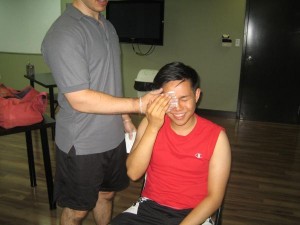An eye stroke occurs if there is blockage that affects the retina. It is important to note that a stroke can also occur in the eyes which is called as retinal artery occlusion. The retina is a delicate film lining the interior surface of the rear part of the eye. It transmits light signals to the brain to interpret what the eyes see.
Once the retinal veins are blocked, fluid leaks into the retina. This results to swelling that disrupts with the circulation of oxygen and affects vision. If there is an obstruction in the main retinal vein, it is called as central retinal vein occlusion. Once it involves one of the smaller branch veins, it is known as branch retinal vein occlusion.
Am I having an eye stroke?
The indications of an eye stroke can manifest slowly over hours or days or occur abruptly. A distinctive clue to watch out for is if the symptoms affect only one eye such as:
- Eye pain or pressure
- Floaters or small-sized gray spots floating around the field of vision
- Blurred vision that gradually worsens in a part or the entire eye
- Complete loss of vision that occurs abruptly or steadily
The indications of an eye stroke can manifest slowly over hours or days or occur abruptly.
If an individual shows these signs of an eye stroke, a doctor should be consulted right way even if they seem to clear up. If left untreated, it can lead to lasting vision loss.
Risk factors
Anyone can end up with an eye stroke but there are certain factors that increases the risk. As one gets older, he/she is likely to have an eye stroke. In addition, it is more prevalent among men than women.
Some medical conditions also increase the risk such as:
- Diabetes
- Blood flow issues such as high cholesterol or blood pressure
- Glaucoma
- Rare blood ailments
- Constriction of the neck or carotid artery
- Other heart diseases
In addition, smoking also increases the risk for all forms of stroke.
Management
The treatment for an eye stroke is based on the seriousness of the damage. The overall health of the individual is also considered. Some of the possible treatment options include:
- Drugs that deal with any clots
- Massage the eye region to open the retina
- Laser treatment
- Hyperbaric oxygen
- Corticosteroids
- Pan-retinal photocoagulation therapy
- Anti-vascular endothelial growth factor drugs
If treatment is started early, the better the chances of saving the vision of the individual. Other conditions present that are responsible for the blood clots should also be treated as well.

